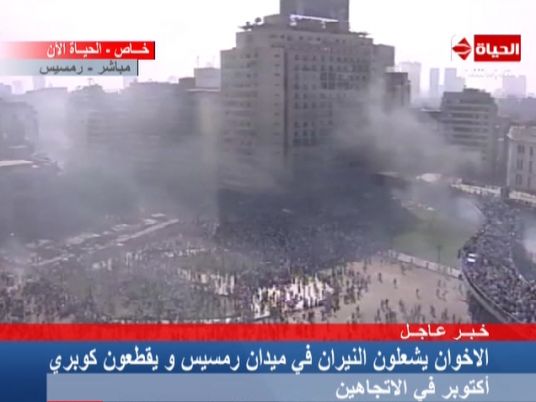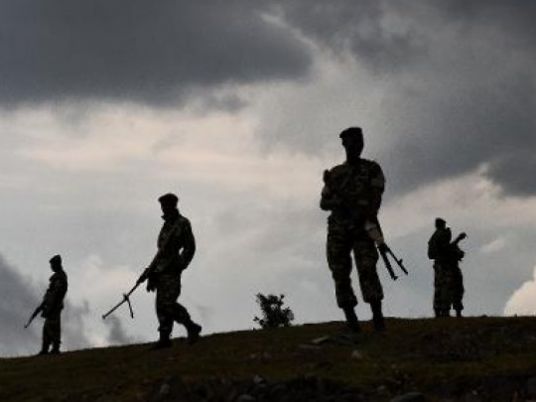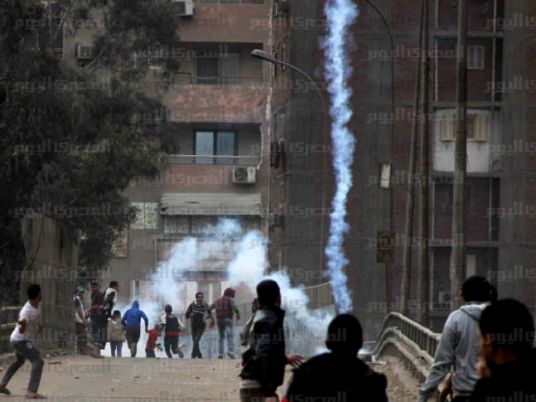
Political violence in Egypt peaked in August which saw 557 violent incidents nationwide during the month, an unprecedented escalation that followed in the wake of Islamist President Mohamed Morsy's downfall in early July.
According to a recent “Democracy Indicator” report issued by the International Development Center, three sides have played a role in this violence: the Muslim Brotherhood and supporters of Mohamed Morsy on one side, citizens and political activists on another, and the army and police forces on the third.
At least 193 clashes broke out between Morsy supporters and residents across the country in what may be the highest rate of violence ever seen between Brotherhood sympathizers and grass-root citizens since the founding of the Muslim Brotherhood by Hassan al-Banna in 1928. Meanwhile, clashes between security forces and Brotherhood supporters only made up a total of 37 incidents, the report claimed.
These statistics support the theory that anti-Morsy sentiment was largely based on a nationwide anger with Morsy’s one-year term in power and his group’s incitement to commit violence against any person backing the “military coup d’état,” as the group calls it, in contrast to the definition of a “revolution” given by the majority of Egyptians.
In the meantime, the data also suggests that the combination of grass-roots support for Defense Minister and army chief General Abdel Fattah al-Sisi’s call for a public mandate to confront “violence and potential terrorism” and the anti-Morsy media's success in mobilizing people against the beleaguered Brotherhood may have caused August's violence.
And yet the report suggests that the provocation and reaction of anti and pro-Morsy protests in the wake of the June 30 demonstrations resulted in riots and armed clashes.
According to the statistics-heavy report, anti-Brotherhood residents broke up 29 pro-Morsy protests using a range of methods. Some of these methods included besieging Brotherhood supporters to block their marches and throwing garbage and water on them from balconies. In response, Brotherhood protesters set fire to 28 privately owned buildings, whose ownders retaliated by setting ablaze to 25 Brotherhood offices and buildings, as well as attacking mosque preachers for taking the side of Brotherhood during Friday sermons.
The violence reached its peak on August 14 when both the army and police broke up the Rabaa al-Adawiya and al-Nahda encampments which followed Morsy’s ouster by the military. This day witnessed 150 violent incidents, followed by August 16 with 87 incidents.
The report shows that 116 incidents occurred from August 1-13 and 441 violent incidents from August 14-31 in the strongest wave of reprisals from the Muslim Brotherhood against security force brutality.
Such escalation after the Rabaa al-Adawiya sit-in's dispersal is a sign that the security solution merely exacerbated the situation or that the decision to clear the sit-ins forcibly might have been strategically incorrect. Since the dispersals, jihadists have increased their attacks against both the army and police in Sinai. Separate attacks have also been launched in Cairo, including an assassination attempt targeting the interior minister on Sept. 5 when a car bomb blew up next to his convoy. Following the assassination attempt, the interior minister warned that a wave of terrorism by opponents of the military-backed government was just beginning.
Islamists separate attacks following the sit-ins' dispersal
Attacks on police stations, checkpoints and security sites were ranked as the second most violent policy adopted by the group and its sympathizers in August as 147 attacks targeted these sites as well as 43 attacks against government buildings, according to the report.
Yet, some checkpoints and police stations, especially in Arish town (344 kilometers northeast of Cairo), are being repeatedly attacked without any defensive response or precautionary procedures from security forces. For instance, the al-Reesa security checkpoint on the Arish-Rafah international road in North Sinai has been attacked 46 times.
Christian Copts have also paid a heavy price for supporting General Sisi’s intervention to oust the Islamist-backed Morsy. Thirty-nine churches and Coptic property across Egypt were looted and set ablaze. The report points out that “the sectarian violence has been used as a tool for achieving political interests.” It also reflects the conspiracy theory that circulated among Islamist backers that Christian Copts (estimated to be 10 to 15 % of Egypt’s 90 million population) led by Pope Tawadros II plotted to oust Morsy out of hostility to Islamic Shariaa. However, “the security presence in these attacked Coptic buildings was relatively weak," the report noted.
The report underlined the importance of undertaking a serious investigation into the violence that took place during the Rabaa dispersal as well as the incident in which 38 detainees were killed on August 18 on their way to Abu Zaabal prison north of Cairo.
Official accounts attributed the deaths to suffocation from teargas fired to combat an escape attempt, in contrast to the report which referred to prosecution investigations that showed some security forces used brutality against unarmed prisoners.
On the other hand, the report found a connection between the rise of violence and the protest marches by the Muslim Brotherhood and the group’s sympathizers, which, according to the report, is a reflection of the group’s involvement in this violence.
Geographical map for political violence in August
Geographically, the Giza governorate is ranked at the top of political violence incidents with 46 acts of violence, followed by North Sinai that witnessed 44 incidents, while the Nile Delta province of al-Sharqiya -Morsy’s birthplace- came third with 41 incidents.
The three provinces with highest rates of political violence are Islamist strongholds. North Sinai, especially “Arish, Sheikh Zwaid and Rafah, are strongholds of radical Jihadists who intensified their operations against the army and police after Morsy’s ouster, using Sinai due to its rough terrains, reminiscent to Peshawar of Pakistan, to set up camps for training and recruiting Takfiri groups who just believe in two things: Tafjeer (explosion) and Takfeer (infidelity),” said Nageh Ibrahim, a senior member of Egypt’s militant Islamic group, al-Gama’a al-Islamiyya.
Giza is a stronghold for the Muslim Brotherhood, especially in the surrounding rural villages where the Muslim Brotherhood have been working for a long time and gained strong grass-root support through helping the poor.
The report also recognized a correlation between Brotherhood influence and existence in some areas and the political violence. According to the report, "the more the MB exists in an area, the more violence breaks out.” Moreover, there was also a connection between provinces that witnessed high rates of votes for the Muslim Brotherhood and the violence that erupted there.
The number of the killed, injured, arrested
While official statements estimate the number of the killed to be 700 and the injured to be 5000, some NGOs reported at least 1800 killed and around 8000 injured. Estimates from Brotherhood leaders gave somewhat exaggerated numbers of over 3000 killed and scores of thousands injured, while the Ministry of Health and the Cabinet remained somewhat ambiguous and issued contradictory statements.
Yet, the report fact checked some numbers estimated to at least “1000 killed and around 6000 injured from all sides” during August.
According to the interior ministry, an estimated 1,004 Brotherhood members were arrest and detained under charges of riotous acts. Meanwhile, the Brotherhood leaders declared the names of 1800 people arrested, with other statements claiming that the round-up campaigns arrested 8000 Brotherhood supporters.
The report blames official authorities for neither declaring the real numbers of those arrested nor what charges are leveled at them.
Torture incidents committed by MB
Backed by testimonies and investigations, the report found that Brotherhood supporters had tortured some civilians during and after the forced dispersal of the Rabaa sit-in, verifying reports by NGOs of people tortured to death, including children and women.
According to the report, 44 people were tortured during the first three days after the dispersal, while 22 others were tortured to death. However, there are no official statements yet concerning these incidents.
Despite all the excessive violence exercised by the Brotherhood as a result of the Rabaa al-Adwaya dispersal, the new military-backed government has been doing everything in its power to pave the way for achieving the roadmap and stability amidst tug-of-war conditions. The report, however, emphasizes the necessity of not misusing the emergency law and the political turmoil in a way that makes a police state as the only possible option. The report stated that even if this option were acceptable for the current situation, it would not be accepted by the people in the long run.
For their part, the report stressed the need for the Muslim Brotherhood to reintegrate into society by rejecting its supporters who create havoc and engage in terrorist acts. “Otherwise they [the Brotherhood] will be ostracized by society to the point that it will be impossible for them to turn back,” the report warned.


